Building at Scale Supplement
Ever larger, ever faster
Building faster and bigger in the gigawatt era
> Deploying hyperscale data centers in a grid-constrained world


Overcoming data center construction supply chain issues
> DPR, HITT, Compass and more discuss the supply chain crunch
Deploying at speed with prefab data centers
> The benefits and challenges of modular facilities
Sponsored by
INSIDE







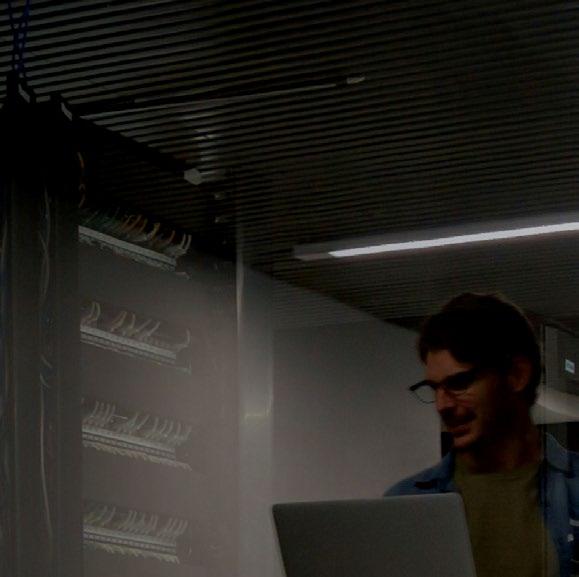

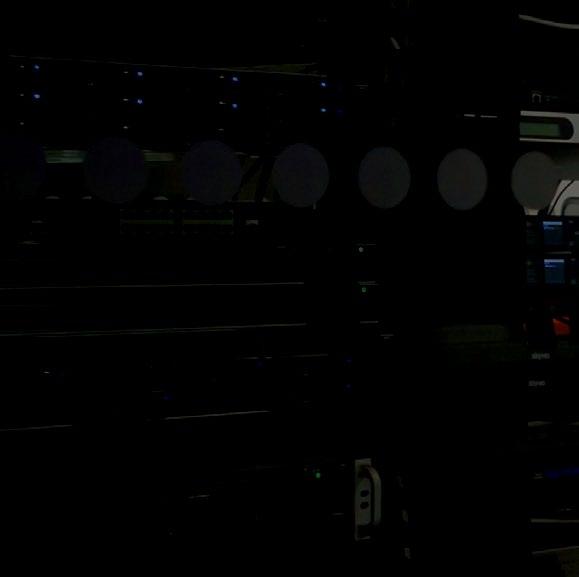
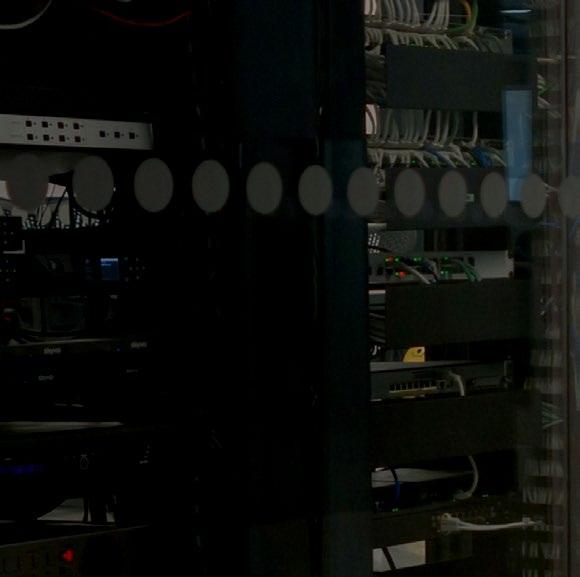
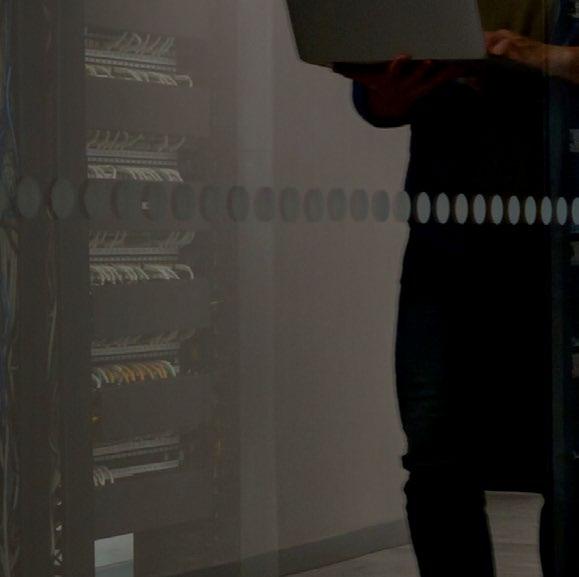















DCD Magazine • datacenterdynamics.com @ 2022 Schneider Electric. All Right Reserved. Schneider Electric is a trademark and the property of Schneider Electric SE, its subsidiaries and a liated companies. 998-22401452 Let’s create Data Centers of the Future – together. se.com/datacenters
Meeting the demand
Despite a wobbling economy, demand for data centers remains strong. Traditional compute requirements, the move to the cloud, and new workloads like artificial intelligence are increasing the need for new builds.

Hyperscalers like Google and Microsoft are after ever larger deployments, pushing companies to develop gigawatt campuses, despite an increasingly constrained and limited grid.
At the same time, to ensure that hyperscale companies don't just build it themselves, data center developers need to deploy faster than ever, shaving every second they can off of their own offerings, while keeping to the exacting standards of the tech giants.

Hyperscale happiness
We talk to the head of growth at QTS to understand how they pull off the delicate balance of building faster than ever and larger than ever, even as the grid gets ever more uncertain (p4).
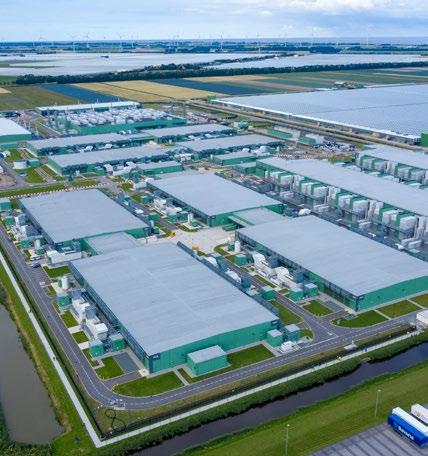
The supply challenge
Deploying at speed and scale can be challenging at the best of times. But with supply chains stretched, the best laid plans of mice and project managers can be undone by the delay of just a single component. That's not great, when you think about the many thousands of intricate pieces that are required to bring a data center to fruition.
Surviving the immediate supply crunch and developing more resilient supply chains for the future requires rethinking design
Sponsored by
and build.
We talk to DPR, HITT, Compass and more about what it takes to keep a project on schedule in a chaotic and unpredictable time.
Highlights include simplifying design to remove the number of elements that could be supply constrained, repurposing equipment, and building long-term relationships.
Also key is hiring a more diverse workforce, providing new perspectives and helping solve the ever-present skills shortage (p10).
The prefab route
Another way of meeting demand at speed is through the use of modular, pre-fabricated data centers.
Instead of worrying about the challenges of on-site construction, the headache is shifted to earlier in the chain - back in the factory. Companies aren't held back by the weather or other limitations at the construction site, and can modularly deploy in line with demand.
Pre-fab users told DCD that another advantage is quality control, as centralized development ensures each module comes out the same.
Equally, should customers need different specs, that can be handled at the source as required.
Of course, modular and pre-fab isn't for everybody. It's particularly of use for smaller sites, or timelimited deployments (p13).
To meet the challenges of growing demand, companies will need to work out which solution best fits their requirements. And then they will need to scale that solution aggressively.
Building at Scale Supplement | 3
4
Contents
10
Building faster and bigger in the gigawatt era QTS on how to deploy data centers for hyperscalers in a grid-constrained world
Overcoming data center construction supply chain issues DPR, HIT T, Compass and more discuss how they survive the supply chain crunch
Deploying at speed with prefab data centers
benefits and challenges of modular facilities 13 Building at Scale
4.
10.
13.
The
Building faster and bigger in the gigawatt era
QTS on how to deploy data centers for hyperscalers in a gridconstrained world
 Sebastian Moss Editor-in-Chief
Sebastian Moss Editor-in-Chief

As the needs of hyperscalers grow, data center developers are faced with the twin pressures of building faster and ever larger.
To understand how to stay ahead, we spoke to QTS Data Centers' chief growth officer Tag Greason about running a data center business in the gigawatt era.
"About three or four years ago, people would buy six megawatts, and then they would put six megawatts on reserve," Greason recalled. "Then it moved from six megawatts to half a building. And then it moved from half a building to a full building with another in reserve.
“Now we're starting to see hyperscalers out in the market asking for multiple buildings in single locations. And so that unit of growth has put pressure on the industry to keep up and maybe even be a couple steps ahead."
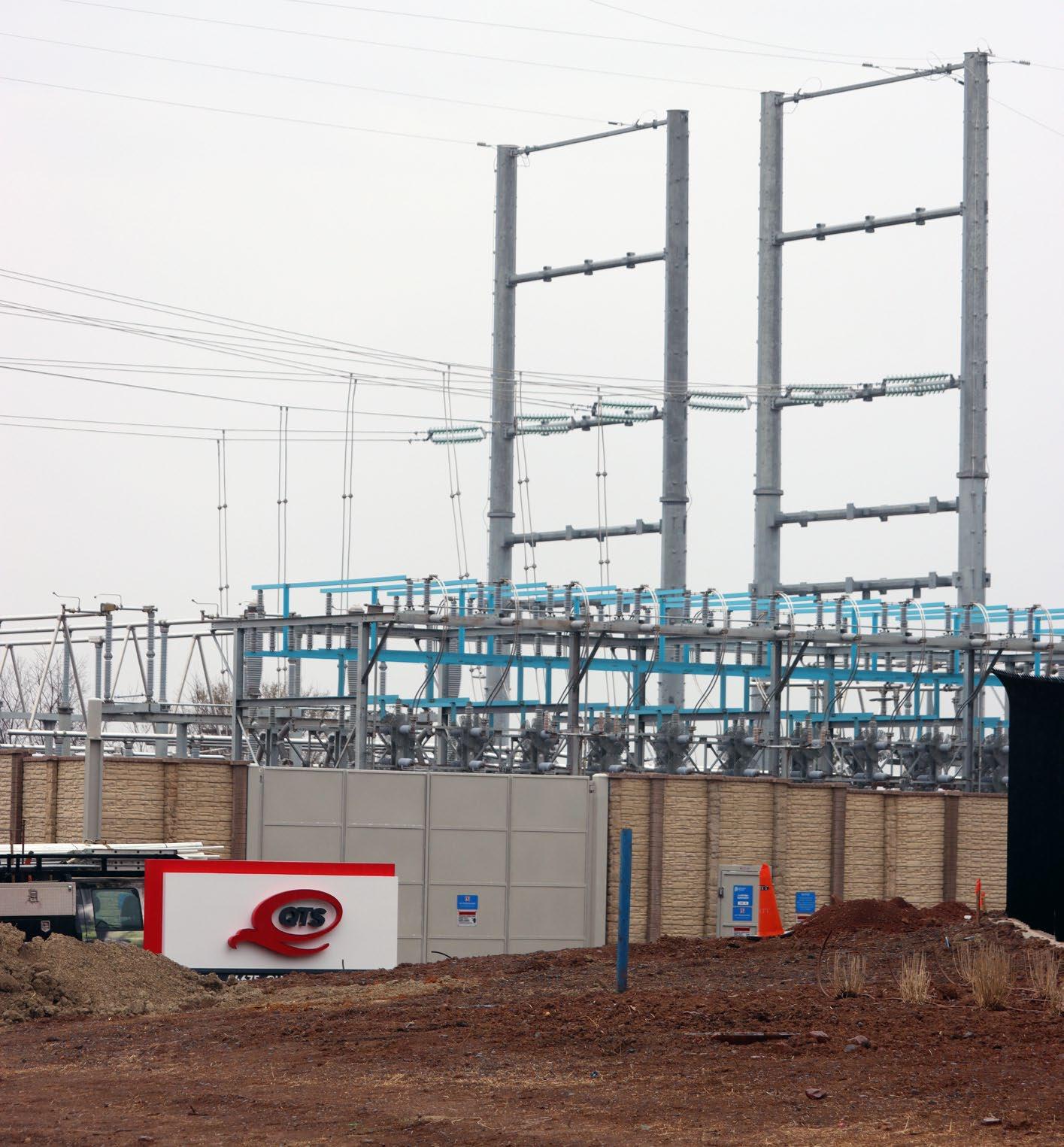
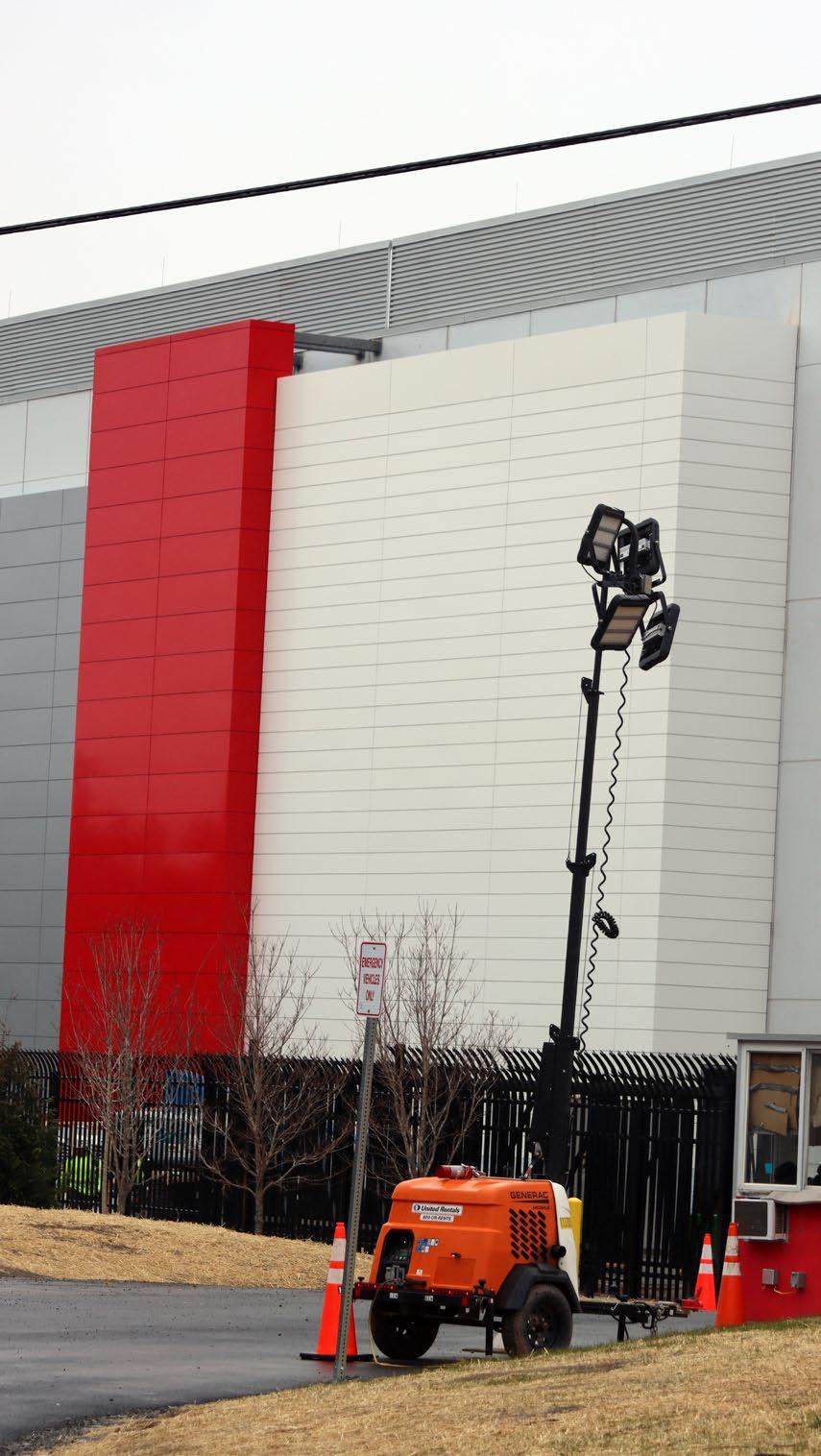
Previously the chief hyperscale officer at QTS, Greason understands the precarious space the company and its competitors exist in: "One of the things that’s important in this journey is that if the hyperscalers could build it themselves, they would."

To ensure that hyperscalers do turn to companies like QTS, they need to bring something else to the table. "The advantage we bring is speed - If I can take a year off of their timelines I'm in the conversation.”
To pull this off, the company looks for areas that are likely to draw hyperscalers and invests early, buying the land and building out as much as possible before they find a customer.
"You’re seeing this acceleration in not only unit of growth, the acceleration in our pre-planning and our leap forward in land and entitlements and getting the pad ready,” he said.
Of course, that means buying up land and starting preparatory work even without a guarantee of business. "Iit's a leap of faith, but less than five percent of the total cost of the project is going to be landed in. I could even build a shell standing there and still be sub-20 percent of the total cost.”
The real cost comes after the deal is signed, and the shell has to be configured to the unique needs of the customer. “That’s where I start spending really large dollars,” Greason said. “The first leap of faith is buying the land in the right location, and then the cost is minimal to get yourself prepared in the game."
Where to place that bet on that land has changed as the concept of a cloud 'availability zone' has changed. "For years, the hyperscalers said, 'hey, I need you to be within proximity of my availability zone - you need to be in Amsterdam, you need to be in Ashburn, you need to be in Santa Clara,’” he explained. “They dictated where the industry put dots on the map, because it needed to fit within their box.”
Building bigger Building at Scale Supplement | 5
Now, as demand outstrips land and power supply in the original zones, “they want to know, ‘can you create a new roadmap to 150MW at the timelines that we need?’ They don't really care if I have 10 acres in Amsterdam, 15 acres in Frankfurt, or 30 acres in London, all they ultimately care about is whether I can get them access to infrastructure. That has been the key to all of this as we go forward."
To find the right land, QTS first focuses on the industry's number one bottleneck: "I don't mean to be facetious, but I see people going out all the time and acquiring 300 acres with the hope that they're going to go to the utility company and secure the power contract,” Greason said. “That to me is the real leap of faith. We've gone at it with a different approach - I'm letting the utility company tell me where I should go.”
The company turns to utility companies and says “‘’show me on the map where we can get a roadmap to 400MW.’ And then I've de-risked the entire venture."
To do this with ever larger power envelopes in an increasingly
The rise of leasing
As the data center industry moves through different stages, the relationship between the wider sector and the hyperscalers defines the health of the trade.
Often, the hyperscalers will try to build and deploy infrastructure on their own, cutting out middlemen that could eat into their margins and control. But, as long as they trust the vendor, offering greater speed to deployment can be a huge attractor.
Another reason that they might outsource is market forces. “I see that that pendulum is swinging towards leasing, because of the restraints in the capital market,” QTS’ Greason said.

“Certainly in the technology industry, you’re seeing layoffs and
cutbacks, so you’re seeing it swing back to leasing.”
In a time where the economy is wobbling, the CFOs of tech giants are looking for easy wins to appease investors. Leasing is such an opportunity, taking the high capex expenditure of a self-build and turning it into a smaller (at least in the short term) leasing cost.
“There have been so some very serious conversations going on within the hyperscalers that continue to drive this move,” Greason said. “But again, it’s just a part of it - the speed advantage, the access to infrastructure, and speed to scale, are the things that ultimately drive the pendulum swinging back and forth.”
6 DCD Supplement • datacenterdynamics.com
grid-strained environment has meant getting more involved in understanding how utilities work. "18 months ago, we had two people in our utility group. We now have 26 people. We know where the bottlenecks are, and we're bringing people in from industry that speak the right language of a large scale utility company.”
That’s critical as the company moves to a much larger scale. Across all of its deployments, QTS maintains around a gigawatt of infrastructure. “Now. we're looking at eight to 10 sites in the US that ultimately can get to a gig of power each.”
That giga campus strategy may take half a decade to come to fruition, but still represents a huge leap in ambition. “To think that we would go to eight times what we have now makes me nervous,” Greason admitted. “How do we get to do that? Can my team do that? Do I have the development resources? Are we going to stress out our finance team? How are we going to raise the capital for all of that? The organization has to be focused, or we’ll break something along the way.”

He’s confident the company can
rise to meet the challenge, but was clear that this means operating at a scale and scope that is unlike any QTS have seen in the past. “All of the power in the state of Arizona today is seven gigs,” he said. “And we're going to them and saying, we'd like to build one gig.”
QTS doesn’t see that demand tapering off. “If I think about the signals, I see no cap,” Greason said. But what could be a limiting factor is the ability is supply power to different locations around the world.
In Arizona, where the utility is wondering how to ramp up to meet QTS’ needs, “we’re gonna start with a 300MW substation, and then we're going to build a second 300MW substation,” he said. “And we're going to have to be thoughtful and patient, and try to establish the foundation and change the dialog with the utility companies.”
This change is what will set the pace of the industry. “The demand side is not going to be the problem here. It’s supply side and understanding those bottlenecks. And getting ahead of them is the ultimate secret to this whole equation of how to speed to scale.”
Building at Scale Supplement | 7
Building faster
Improving construction efficiency through digitization
Why are we still building our digital future on paper?
In the digital age, it seems remarkable that many critical functions are still achieved by passing documents and spreadsheets between stakeholders and departments –and nowhere is this more apparent than in the construction industry, where a recent study from Turner & Townsend found that only 29 percent of the sector has moved to integrated digital solutions. How can it be that in the bleeding edge of technology, our construction processes are stuck in analog?
We’re in an era where the data center industry is building multiple facilities simultaneously to meet the exponential growth in demand, and each of those buildings is becoming larger in scale and more complex in scope.
More and more feedback data points are being collected, particularly with an eye to ensuring that parties meet their commitments to sustainability. Yet with metrics being kept in PDFs and Word
documents, that information is siloed. Successful best practices are lost, and mistakes on one site can easily be replicated on another. To put it another way, we’ve got access to a helicopter, but we’re not flying high enough to see over the top of the maze.
The question we need to ask is ‘How can construction programs improve their communication and collaboration?’
The answer lies, of course, in digital solutions. By adopting a conjoined digital approach to managing data center construction, all stakeholders across multiple sites can see a 360-degree view of the entire process – no more silos, no more waiting for manual collation, and everything is accessible in real-time. The result is a whole, more significant than the sum of its parts, where risk is reduced and quality improved.
By bringing together all this data, we can run side-by-side comparisons of different design prototypes – whether that’s two or twenty, we can see what

works best and what is most efficient for the business, its clients, and the road to a carbon-neutral future.
Schneider Electric offers end-to-end solutions for data center providers. When we acquired RIB Software in 2020, it was in no small part because we understood the synergies between our offering and the possibilities presented by digital transformation in the sector.
RIB has created an ecosystem that lets that aforementioned helicopter soar – making engineering and construction projects more visible, efficient, and sustainable – creating a “single source of truth.”
RIB SpecLink collates all possible metrics surrounding construction projects, enabling stakeholders across multiple locations to collaborate on a single platform. This enables coordinated specifications and brings consistency to working practices.
Now, as sustainability and ESG re-
8 DCD Supplement • datacenterdynamics.com Building at Scale Supplement
porting become increasingly critical, RIB CostX brings a new simplicity to carbon accounting, utilizing BIM & 2D takeoff, allowing multiple carbon estimators to work together and see how changes in design can impact carbon cost in real time.
Combined, SpecLink and CostX create a powerful ecosystem for hyperscale construction, giving unparalleled digital-first management that raises standards and decreases risk. At a time when the entire labor market is struggling to recruit, the efficiencies offered by digital transformation cannot be ignored.
Construction has not necessarily advanced digitally at the same speed as other industries. It is imperative, therefore, that we demonstrate the potential efficiencies and return on investment that digitalization brings, to ensure construction doesn’t become the weak link in the expansion of the data center industry.
By standardizing working practices, we can also consolidate the entire supply chain, down to the fine details, such
to-date documentation, enabling them to work in compliance with ever-changing requirements in a rapidly evolving world.
All of which means an end to a culture of long, tedious meetings to align parties involved in the build. Everything is on hand, and updated in real-time, leaving skilled professionals to do what they do best. For business, that means individuals and teams are accountable for their actions, through a fully traceable audit trail, raising standards, rewarding innovation, identifying development needs, and advancing the overall quality of output.
The investment in digitalization is an investment in time, ensuring that projects are completed on spec, on budget, and on time. Along the way, the tangible benefits are manifest, such as fresh perspectives and innovative new approaches from colleagues who may be working on the other side of the world.

We’ve already seen amazing results for customers using RIB SpecLink and RIB CostX, and as needs evolve, so will our products, with updated software builds pushed straight to devices, reducing the headache of deployment. Together, the RIB platform offers a holistic approach to data center design and build, sharing success and preventing error, all in a fraction of the time.
RIB’s purpose statement is clear – ‘to make engineering and construction more efficient and sustainable’. The data center industry should always lead from the front. We represent the future, and it’s up to us to bring the future to all facets of our process. If we aren’t leading the charge to modernize, who will?
as making sure every part of the site is using the same light bulbs in the same light fittings. It seems trivial, but when multiplied at a hyperscale level, the bulk purchase of such components and consumables represents huge cost savings.
Change doesn’t only come from within, however, and with myriad standards, regulations, and targets being set at local, regional, and even international levels, digitalization also ensures that every stakeholder has access to the most up-
Schneider Electric | Advertorial
Building at Scale Supplement | 9
Overcoming data center construction supply chain issues
Miya Knights Contributor
DPR, HITT, Compass and more discuss how they survive the supply chain crunch

In the wake of Covid-19, ongoing global geopolitical instability and macroeconomic volatility continue to cause widespread supply chain issues across the data center industry.
In fact, over 75 percent of organizations reported disruptions of some type over the last 18 months, according to recent research conducted by infrastructure advisor Uptime Institute.
Yet, demand for data center capacity
continues to grow. PS Market Research predicts that market revenues will almost triple to $602.8 billion, from 2022 through to 2030.
To resolve these conflicting forces, data center stakeholders are developing new design innovations, capacity planning, strategic sourcing, and project management solutions.
Supply chain disruption differentiators
The sheer scale of density and quantity
of materials required differentiates the supply chain challenges that the industry faces, according to Christopher Gorthy, advanced technology preconstruction lead at US-based data center contractor, DPR Construction.
Gorthy told DCD: “The timings involved in building a data center are much shorter compared to a hospital, for example. Critical validation processes require more time. Plus, mechanical and technical supply chain lead times are also two to three times’ longer.”
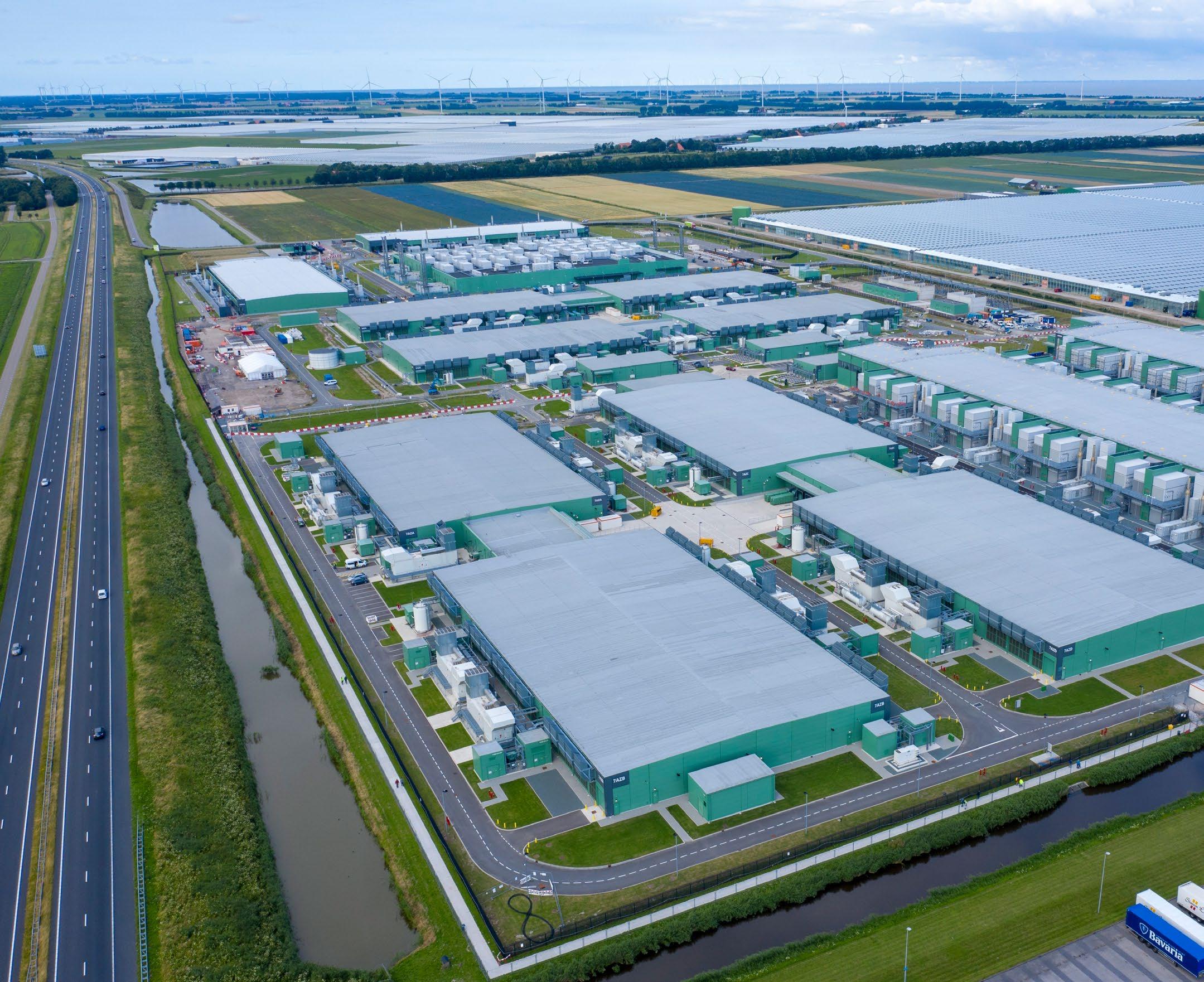
10 DCD Supplement • datacenterdynamics.com
Building at Scale Supplement
He added that other constraints related to power, fiber, water, land, and skilled labor, as well as non-equipment materials shortages, for metal decks and grills for instance, were also contributing to supply chain constraints.
John Arcello, advanced technology core market lead at DPR Construction, said raw material suppliers and equipment manufacturers have been taking steps to respond.
“They are doing all they can to respond to the limitations of ongoing global supply chain issues,” Arcello explained. “In addition to increasing capacity, they are short shipping or developing more plug-and-play solutions that can support uniform or modularized designs.”
Designing for future-proofed flexibility
Design is a key industry differentiator when it comes to overcoming supply chain-related disruption. Gorthy cited the growth in off-the-shelf development. “More buyers are leaning into prefabrication and getting involved more early in the design process,“ he said.
Evan Antonides, EVP for US commercial construction contractor HITT Contracting, pointed out that design agility and innovation have had both good and bad effects.
“Innovation in more power-use efficient equipment has allowed for larger-scale data center deployments at greater power densities per square foot,” Antonides commented.

“At the same time, many digital infrastructure leaders have scaled back MEP [mechanical, electrical, and plumbing] designs with an emphasis on simplification, cutting out unnecessary bells and whistles that can increase equipment costs and lead times that drive schedules.”
Carl Chapman, associate director at global construction consultancy Linesight, also said major contractors were starting to forward buy equipment. “This is taking up capacity, while producers are fighting for space,” he explained. “So, stakeholders are looking for long-term relationships that strengthen their pipelines, with neutral cashflows or upfront payments.”
Factoring in longer lead times
In acknowledging the impact of longer lead times, like Gorthy and Chapman, Antonides advised: “Organizations deploying capital early to mitigate risk stemming from variable lead times prior to construction start are well positioned to deliver aggressively when competing for digital infrastructure deals if they can remain disciplined in their core design models which, while standardized, still allow for innovation.”
To illustrate the point, Gorthy said that some construction projects can now resequence the schedule of works to allow for the late arrival of equipment. He added that 4D scheduling construction sequence simulations generated from a 3D model were helping to increase productivity.
As manufacturers work to reduce lead times, this also has an impact on quality. Here, Antonides explained how, 15 years ago, it was rare to have a major piece of equipment that not only was factorystarted, but also tested under simulated load conditions and witnessed-tested by the owner, engineer, and contractor before being shipped to the jobsite.
“Now, we’re lucky to see the equipment go through factory start-up before it’s shipped, which pushes more factorylevel QA/QC work on-site that can create additional challenges at the jobsite,” he explained.
“Allowing more up-front time with early release counteracts some of these quality issues. Additionally, many of the large-scale equipment deployments for specific clients are standardized within their program. So, when a manufacturer technician is deployed at the site, the fix is usually common instead of the first of a kind.”
Powering growth in data center demand
Beyond design, quality assurance, and scheduling, operators must consider other commodity requirements before even breaking ground. HITT’s Antonides said utility power constraints have become a significant bottleneck for planned deployments over the last year.
Due to overwhelming demand for capacity in some markets, this bottleneck has affected specific regions rather than contracting the US data center market overall.
“In Northern Virginia for example, much of the planned work over the next few years has pivoted from Loudoun County to adjacent jurisdictions due to utility capacity constraints forecasted by Dominion Virginia Power,” he said.
“While in some cases this may benefit the labor force, as it brings opportunity to new regional trade partners, every jurisdiction operates differently, and
Simple supply chains Building at Scale Supplement | 11
permits or inspection-wise, this can have a significant impact on project schedules and delivery timelines.”
Chapman, from Linesight, agreed that power availability was another unique industry supply chain differentiator. “It may be that a data center market grows up around an initial investment in a secure connection,” he observed. “But this can subsequently lead to competition with housing, for example.”

Antonides added that some companies have begun to look at other energy options, such as natural gas or even nuclear power, for the fact that it is greenhouse emission-free and renewable. “If there is already a nuclear reactor in a community, chances are it will also welcome a data center that can provide beneficial tax revenues,” he said.
Necessity inspiring design innovation
A number of the experts who spoke to DCD also said data center structures and footprints are being reimagined. According to Antonides, the continued trend of adding density to floor space will only increase as companies become more comfortable with the emergence of immersive cooling, which puts services in a non-conductive liquid and cuts down on wasted square footage required for heat dispersal.
This reimagination even extended to take capital constraints into account. “With land costs continuing to rise in preferred data center development regions, three- or more-story vertical solutions are being
presented more frequently to allow for larger-scale deployments on limited site footprints,” he added.
Nancy Novak, chief innovation officer for Compass Datacenters, innovative developments created a ‘catch-22’ situation for manufacturers and buyers, alike. “It's the improvement of technology that creates a version control issue where we're racing down this path to develop equipment or materials that are more sustainable, functional or higher performing,” she said.
“It's a very dynamic process right now trying to figure out how to be fungible enough and future proof with what we're doing so that we're not constantly having to pivot. It's because technology is very exponential, and we're seeing it more and more.”
In response, Novak said some clients were repurposing equipment, which is more sustainable and can ease pressure on lead times: “Lastly, having strategic relationships with vendors, who understand what our backlog and pipeline looks like, is key so they can plan ahead and set aside the likes of floor space for our needs as far in advance as possible.”
Overcoming specialist skills shortages
There was consensus, irrespective of the latest measures designed to mitigate upstream supply chain issues, that the lack of skilled resource is also a major factor affecting data center supply stakeholders’ ability to effectively meet demand.
Antonides said: “Staffing shortages remain a challenge. However, more people have entered the construction industry recently due to slowdowns in other markets. Contractors and other industry-related organizations must take responsibility to ensure hiring doesn’t outpace proper training and onboarding. When bringing on new talent, you need to have the right ratio of experienced leaders willing to take time to invest in new team member development.”
Novak put a spotlight on the importance of embracing diversity as a way of filling skills gaps. She suggested that the ways in which contractors look at modern methods of construction, using a more componentized approach and more offsite assembly could help increase diversity, while addressing skill shortages.
“This offers predictable work schedules, commutes and interiors,” she explained. “It's spaces that you can work in, and that are safe, clean and protected. Most of the men in the industry would also like to be home in time to watch their kids play ball or go to their concerts and things like this. So, diversity is critical.”
Novak concluded: “You need that diversity to become more innovative; and, if you're more innovative, you're going to solve problems better. If you solve problems better, you're going to be more profitable.
"It's literally a cyclical way of looking at how to solve supply chain issues and drag our industry into the future. So diversity, to me, is number one.“
12 DCD Supplement • datacenterdynamics.com
Building at Scale Supplement
Deploying at speed with prefab data centers

The benefits and challenges of modular facilities
Christine Horton Contributor

The huge demands placed on the data center today have left many organizations figuring out how to maximize their data center capacity and capabilities. Meanwhile, the rise of Edge computing is fuelling conversations among data center operators about how best to serve more remote locations.
Emerging from these challenges, the prefabricated (prefab) modular data center has seen significant growth in recent years. A prefab data center is exactly how it sounds: individual modules or containers pre-fitted in a factory with equipment that can be stacked to create a larger data center where required. The modules can be shipped to a site pre-assembled and can be deployed much faster than traditional
white space.
They are designed to offer a flexible and efficient alternative to traditional data centers, with the aim of reducing deployment time, increasing scalability, and improving energy efficiency.
Indeed, such is the current momentum around prefab data centers, analysts expect the market to surpass $89 billion by 2030 - up from $21.9bn in 2021.
“In the last three, four, five years, it’s just gone crazy,” said Efficiency IT managing director, Nick Ewing. For enterprise IT, for users in life sciences, oil and gas, automotive, defense, government, they’ve really begun to see real traction.
“It’s not for everybody. But the advantages really outweigh the disadvantages.”
Prefabricate it
Speed of deployment
One of the key selling points of prefab data centers is that they can be delivered much quicker than a traditional data center design and build project, and easily expanded as needed.
“Unlike traditional data center buildings or modular rooms, they can be expanded with ease, and offer customers many more options in terms of where they are located,” explained Chris Wellfair, projects director at Secure I.T. Environments. “A containerized data center can contain all of the same HVAC equipment that a traditional DC would use, be just as secure, and handle very dense loads.”
Since the modules are manufactured in a production facility, the construction process is not hampered by inclement weather, resulting in faster completion times. Wellfair noted that they can be built and fitted out entirely offsite, and delivered to a location where they only need to be plugged in.
“They also offer a great option for customers that may need to expand their data center in the future, as some are stackable,” he said. “Equally for sites that are limited on space, or have a building status that makes it impossible, or costly to build a data center room – they overcome all these issues. Some customers even use containerized data centers as a backup
solution, that is ready to be shipped to a location when an emergency occurs at any time.”
Secure I.T. Environment’s own ModCel containerized data centers are available with flexible power, UPS systems, and cooling design, and can be expanded as more processing power is needed.


“They have been designed to meet the LPS 1175 security, fire, and integrity standards of any traditional data center build,” said Wellfair. “They are also Lloyds of London Certified, so can be safely shipped anywhere around the world. Units can even be deployed as Edge data centers or in isolated locations and remotely monitored, with the confidence that they are secure to theft and protected from the elements.”
Supply chain and sustainability benefits
Matt Holden, chief operating officer at Australia-based Leading Edge Data Centres (LEDC), said it isn’t just about the enhanced speed of deployment – the production process provides centralized quality control. He said the ability to manufacture centrally and then distribute to external sites means LEDC can deliver a factory-controlled product, specific to the site-specific conditions.
“The prefabricated building and
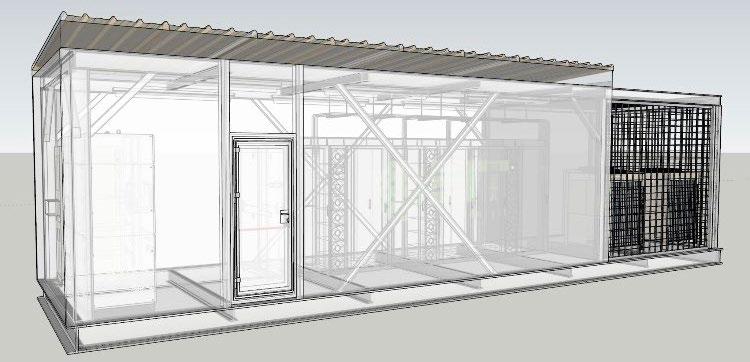
its components and the prefabricated components can be manufactured, assembled, and system tested within a controlled factory environment meaning that the multi-disciplined teams can work together seamlessly and in a centralized location, creating the same output every time, ensuring the highest quality,” he explained.
That’s not the only benefit, said Holden, who added that LEDC manufacturing its own prefabricated data centers in Australia ensures sovereign capability is being developed, which is important to the company.
Another potential advantage is that prefabbing can help ease issues firms might otherwise see around supply chains.
“Prefab can improve the impact of issues around supply chains by allowing some delays to be built into the schedule without impacting cost,” said Holden. “Because our data centers are manufactured in a facility, if deliveries are delayed, we can plug those delay gaps by moving tasks up in the schedule that would have to be fully sequential on a traditional data center build.”
Prefabricated modules can also help alleviate supply issues by using common building elements found in office buildings, homes, and other construction projects, said Tony Grayson, general manager of Compass Datacenters. They are also typically used in smaller quantities, which can further streamline the construction process.
“Another important benefit is that by prefabbing locally, transportation and installation costs can be significantly reduced. Additionally, local construction teams are often in closer communication with the appropriate AHJs (Authorities Having Jurisdiction) and can help avoid permitting problems,” he said.
14 DCD Supplement • datacenterdynamics.com
Building at Scale Supplement
“You don’t have four solid walls that you’ve got to work within because with modular, you can take two building blocks and put them together. So you can be flexible with what you’re doing"
The exec pointed to Compass Quantum’s design, which is designed to be manufactured in a production line, allows for large-scale deployments with rapid delivery.
“Our solution is mass customized, allowing us to meet customer requirements while still keeping speed to market and costs lower. It can be rapidly installed on piers rather than large concrete pads, which has a number of benefits in terms of permitting and sustainability.”
Sustainability, of course, is becoming an increasingly important consideration in the data center industry. “It is essential to incorporate sustainable practices at the Edge since prefabricated modules will be placed in residential areas and deployed in large, dispersed numbers,” said Grayson.
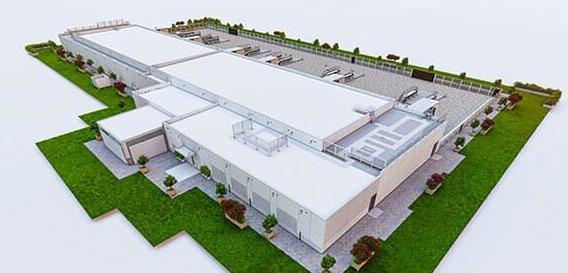

“Retrofitting these modules later can be costly and difficult. By testing new technologies in prefabricated modules, we can explore more sustainable solutions
and potentially lower the environmental impact of data centers. I believe this is an important step towards a more sustainable future.”
No pre-existing limitations
For Efficiency IT’s Ewing, the beauty of prefab data centers, aside from their speed of deployment, is their ability to be customized to the customer’s specific requirements.
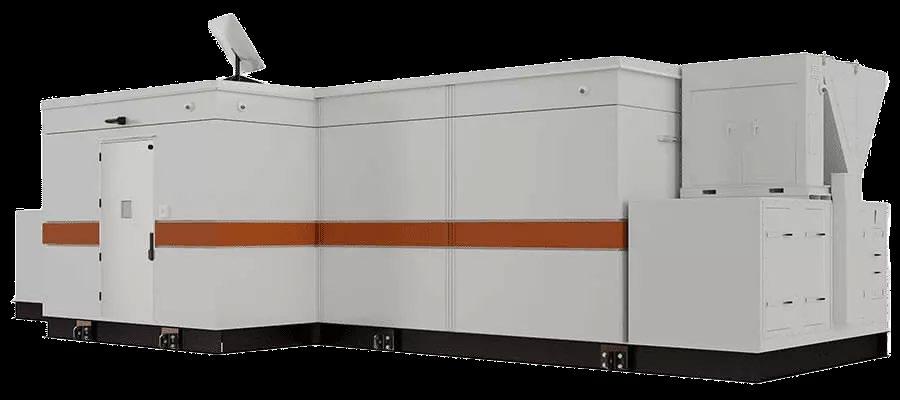
“There’s a greater level of customization because you’re not constrained,” he said. “You don’t have four solid walls that you’ve got to work within because with modular, you can take two building blocks and put them together. So you can be flexible with what you’re doing.
“The key is its application and business specific. If a customer says this is what we’re looking for, this is what we need to achieve, whether it’s low density or really high density – we almost have
complete freedom as long as technically it’s validated and it works.”
Efficiency IT recently launched ModularDC, a range of customizable, prefabricated data centers based on technology from Schneider Electric. Serving customers within government, defense, and other businesses-critical sectors – all of which typically need to react quickly to events – the data centers are deployable in as little as 12-16 weeks.
But as with anything, there is a tradeoff. Modular, prefabricated data centers won’t fit every customer's requirements. If you want to build in an existing room or building space, for example, then standing up a modular facility will be womore expensive. But where space is limited or costly, and there is space to put up a prefab in a warehouse or externally, then modular is a good choice.
In many cases, the reason to opt for a prefab data center comes down to how quickly you can deploy, versus having to build from scratch. But also, customers are now realizing they no longer need to try to fit a round peg into a square hole when it comes to their data center requirements.
“The ability to customize a room inside a building is limited,” said Ewing. “The ability to customize something that sits outside of your building fabric, it’s far more available.
"That’s where we see a lot of the value – being able to tailor to the customer's needs. We are masters of our own destiny. We can design whatever the customer needs because we have no pre-existing limitations.”
Building at Scale Supplement | 15 Prefab data centers


































 Sebastian Moss Editor-in-Chief
Sebastian Moss Editor-in-Chief




















